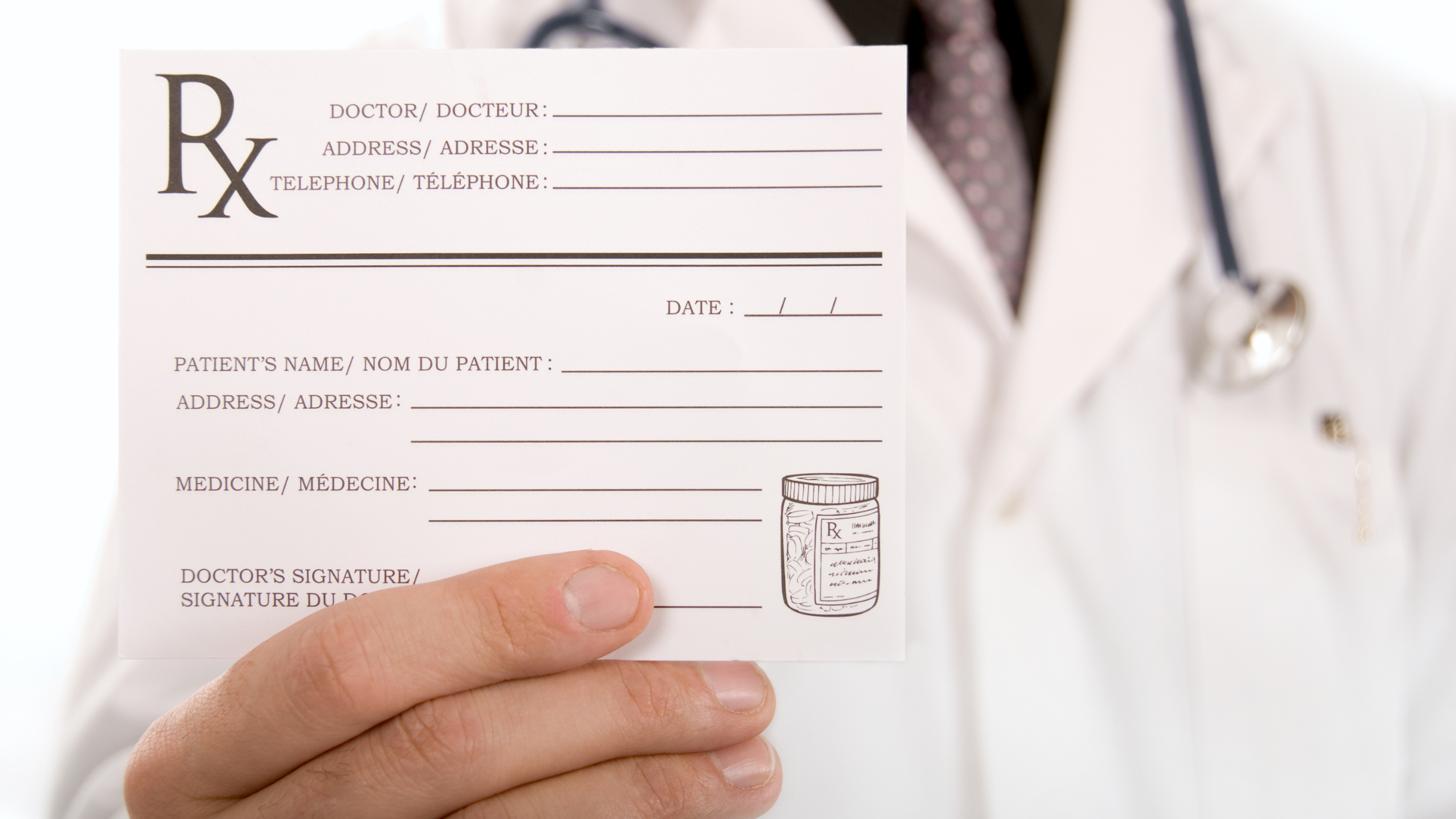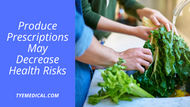Produce Prescriptions May Decrease Health Risks
Written by TYE Medical on Sep 12th 2023
You’ve probably been told since childhood to eat your fruits and veggies, and it turns out that mama was onto something. Sure, it’s healthier to eat more produce, and experts recommend filling half your plate with vegetables. But now produce prescriptions are the latest health trend. In fact, a new study suggests produce prescriptions may decrease your risk for cardiovascular disease.
Ever hear the phrase “food is medicine”? Science may be proving it true. The study published in the American Heart Association's peer-reviewed journal, Circulation, included participants at higher risk for heart disease. Over the course of six months they were prescribed specific amounts and types of produce to eat. Findings linked the increased produce consumption to several health improvements.
Let’s take a look at the potential benefits of produce prescriptions, their limitations, and how you can get and use them.
What Are Produce Prescriptions?

Each year 700,000 Americans die from heart disease and over 100,000 from diabetes. These are illnesses directly impacted by diet. Since what you eat affects your health, it makes sense that altering your diet to increase produce consumption would have positive benefits.
While you may have the means to make a grocery run for bags of veggies and fruit, not everyone can. But when a doctor not only recommends more produce but also prescribes it, it becomes possible to subsidize the cost through insurance or government programs.
But the concept isn’t general. In other words, your doctor’s prescription will include more detail than just “eat more fruits and vegetables”. Produce prescriptions may also involve “medically tailored meals” that provide specifications for what you eat on a daily basis and what produce to include. This is where food becomes medicine as doctors target specific medical conditions, either existing or likely, with food combinations.
Often these medically tailored meals are delivered to your home fully prepared and created to meet your specific health needs. And yes, this will notably increase your food budget, which is why a medical prescription for produce or medically tailored meals is essential for some people. The prescription allows them to receive financial aid through food programs and insurance to offset or cover the cost.
How Produce Prescriptions May Improve Heart Health and More

During the study, participants with increased risk of heart disease were given an additional $63 per month to buy produce and were also provided with nutrition classes. After an average of six months, findings included:
- Blood sugar levels declined in individuals who began with elevated readings.
- Decreased blood pressure levels in those who began the study with high readings.
- BMI decreased slightly.
- About two-thirds of participants reported feeling better and healthier.
- Overall produce intake increased about one cup per day.
More Americans die from cardiovascular disease than any other medical condition. Simply replacing more of your diet with produce can help reverse, decrease, or even prevent heart disease and even high blood pressure. And it doesn’t always take a lot of change. Just a reasonable increase in vegetable and fruit intake can have big effects on your health.
High blood pressure, diabetes, and obesity are serious risk factors for cardiovascular disease and adding more fruits and vegetables in your diet can reduce the likelihood of developing these conditions. Therefore, eating more produce instead of carbohydrate and sodium-spiked foods can make a huge difference for heart health.
Food prescriptions also benefit heart health because eating more produce also means you’re getting more fiber, potassium, and antioxidants. All of these nutrients are known to lower LDL cholesterol levels, lower blood pressure, and even reduce inflammation.
Replace processed, pre-packaged foods with whole-food fruits and vegetables. This will also drastically cut your sodium intake, even if you add a little salt to your veggies. Prepackaged foods, including frozen meals, are notorious for high-sodium content.
How Produce Prescriptions Are Limited

How practical are food prescriptions?
Established Programs Exist
Some argue that federal programs already exist to improve access to whole fruits and vegetables, programs like SNAP, WIC, Meals on Wheels, and food banks. All of these can help you acquire produce even if finances are a hindrance. SNAP is a modern version of food stamps. But these programs show similar benefits to produce prescriptions and leave experts wondering if they should invest more in these existing programs or shift focus to developing the idea of produce prescriptions, integrating them into the healthcare system.
This raises another concern. As produce prescriptions lead to an increase in medically tailored meals, big business will surely get involved. When big box chains get involved with food production, it has historically led to mass-produced food that is highly-processed, poorer in quality, and lower in nutritional value. Of course, this completely defeats the purpose of produce prescriptions and medically tailored meals.
Produce Prescription Initiatives Are Underfunded
The Agricultural Improvement Act of 2018 authorized the Produce Prescription Program which gives grants to organizations willing to help assess and implement the program. But the funding is minimal and nearly enough to accomplish wide-reaching goals or establish a national program.
It seems the only way to produce prescriptions to gain consistent funding and continue long-term is to involve government programs like Medicaid and Medicare. But currently, no one is sure how to integrate the programs and pull this off on a large scale.
This means that produce prescriptions may not be accessible for everyone on a large scale for at least a little while. But the attention and effort means that adding more fruits and vegetables to your diet must be a worthwhile, effective way to improve your health.
Medicare and Medicaid Involvement

If you’re 65 or older and living on a fixed income, purchasing healthy foods and produce can be a challenge. If you find a doctor or facility that writes produce prescriptions, it’s possible your Medicare Advantage plan will cover some of your fresh food costs and medically tailored meals. Contact a Medicare Advantage agent to find out about specific benefits and participating providers.
Some states like California allow individuals with certain conditions like type 2 diabetes to use Medicaid benefits to purchase food during specific times. Even if you have private insurance, it could be worth it to contact your insurance provider to find out what resources are available to cover produce prescriptions.
No Produce Prescription? Try These Tips

You might not have the access to produce prescriptions just yet, or perhaps you wouldn’t financially qualify for the program anyway. In either case, eating more produce each day is obviously a worthwhile health goal.
The American Heart Association recommends eating 4 ½ of fruits and vegetables each day. And you may be encouraged to know that aside from fresh produce, this also includes frozen and canned varieties. Just watch the sodium and sugar content in canned varieties.
Meanwhile, you can use these ideas and examples as inspiration as you create meal plans.
Breakfast
- Eat melon, grapefruit, or other preferred fruit.
- Add bananas, berries, or raisins to your morning cereal.
- Drink a small glass of 100% juice (about 6oz).
- Add chopped veggies to eggs or potatoes. Onions, bell pepper, celery, or spinach are good options.
Lunch
- Include a fruit or vegetable salad with lunch.
- Add veggies like cucumber, tomato, lettuce, or avocado to your sandwiches.
- Eat vegetable soup. If using canned soup choose a lower sodium option.
- Eat fruit or raw veggies with your lunch instead of chips.
Snacks
- Keep raw veggie sticks on hand, washed, cut, and read to eat. Good choices include green beans, bell pepper, celery, and carrots.
- Carry a supply of dried fruit with you. But if you’re diabetic or prone to glucose problems, it’s best to opt for fresh in limited quantities.
- Eat fresh fruit or snack on a bowl of frozen fruit.
Dinner
- Eat a fruit or vegetable salad with your meal.
- Include a side of steamed or microwaved veggies.
- Add a whole potato or sweet potato to the rest of the meal you’re cooking in the oven.
- Add veggies like onion, garlic, and celery to soups, stews, and bean dishes.
- Add frozen peas (or other veggies) to rice during the last three minutes of cooking.
For more tips, read our article, How to Eat More Vegetables and Reap the Benefits (7 Tricks to Try).
What the Push for Produce Prescriptions Can Teach Us

It’s time to up our produce game. When agencies, the government, and the healthcare system are putting effort, funding, and research into the best way to prescribe produce to the public, we know we’ve reached a new low in the Standard American Diet (SAD).
You can’t argue with the health benefits produce delivers. And truthfully, if we cut back on the processed, convenience foods and add a few more bags or bunches of produce to our grocery cart each week, there most likely would be a cost savings. And yet the greatest benefit is our long-term health and trimmed waistline.
This week, skip over some of the carb-rich, salty snacks and processed foods that are your go-to buys and spend some more time in the produce section of your local grocery store. And when you get home, go ahead and wash, prep, and rinse that produce for easy access the rest of the week.


